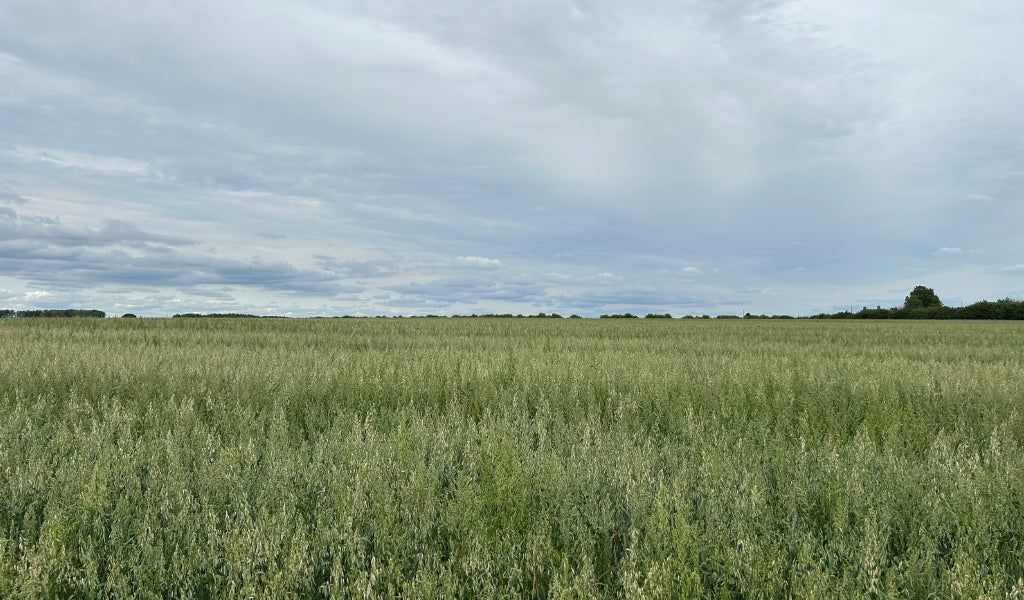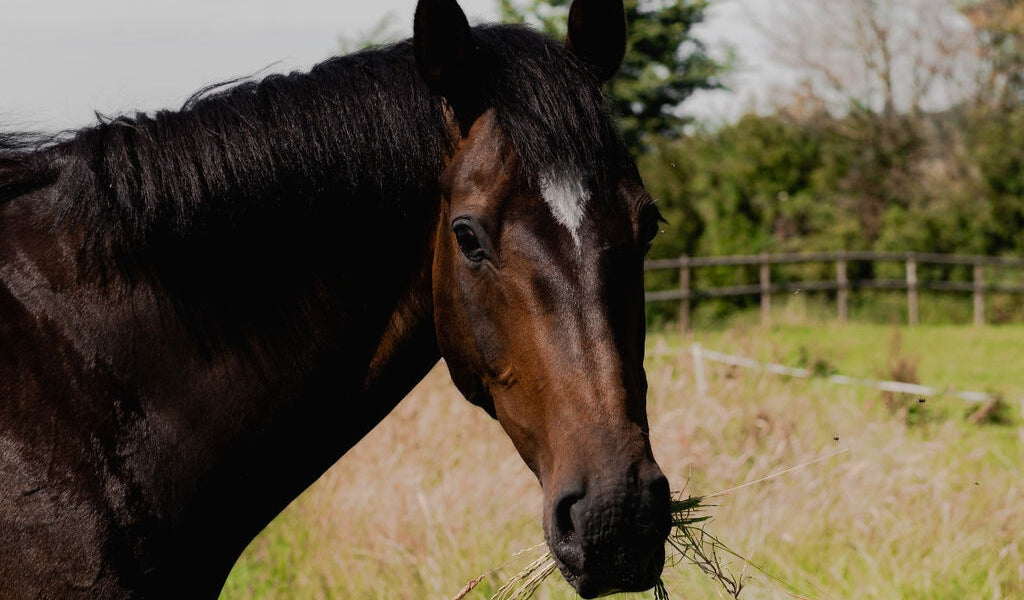Let’s be honest, 2025 wasn’t an easy year to grow anything. The UK saw one of its hottest, driest seasons in recent memory, with barely any rain and crops struggling across the board. But that also made it the perfect year to test something new.
Farmer Phil White trialled microbz soil, our microbial soil conditioner, on 40 acres of spring oats to see whether supporting the biology in his soil could help crops stay healthier and more resilient when the weather wasn’t playing ball.
And despite the conditions, the results were clear: the treated oats established better, looked stronger, and ultimately yielded more than the untreated area. Here’s how the trial came together and what Phil saw in the field.
A farm on a regenerative journey
Phil’s 400-acre Oxfordshire farm has been steadily shifting from growing conventional cereal crops to a more regenerative system built around companion cropping, herbal leys and grazing off cover crops, and reduced tillage.
Like many farmers transitioning to regenerative systems he began to see the impact on soil correction, soil structure, higher levels of organic matter and reduced input costs.
By 2024, the rotation had evolved into this year’s spring oat blend with a nurse crop, supported by herbal leys that were bale-grazed with cattle. Crops were direct drilled into the previous season’s stubble understory, building on several years of reduced tillage, a great foundation for microbial inputs to really shine.
Setting up the trial
The crop:
spring oats, drilled at approx. 200g per hectare, under sown with white clover
The trial area:
20 acres treated with microbz soil, 20 acres in the same field untreated as control
Inputs: both areas received the 2 x 40kg soil applied nitrogen and the same amount of foliar nutrition.The only difference was one application of microbz soil
The application:
• 50 litres of microbz soil + 100 litres of unchlorinated water per hectare
• Applied approx. 6 weeks after drilling at growth stage 30/31
• Delivered via boom sprayer
What is microbz soil, exactly?
Microbz soil is a blend of 100% natural, diverse soil-based microbes, fermented with humic and fulvic acid, mycorrhizal fungi and trace minerals. It is designed to support living soils by improving nutrient cycling, strengthening roots and crop establishment and building resilience, especially when the weather turns challenging.
The trial set out to test whether boosting the soil’s natural biology could enhance crop growth and resilience. And then came the real challenge: months with little to no rain. The question became simple, would a more active soil biology help the crop handle drought stress, or would the lack of moisture override anything happening beneath the surface?
A season of extremes
The spring and summer in 2025 were unusually hot and dry across much of the UK creating real challenges for soil moisture and crop resilience. Spring was not only one of the hottest on record, but one of the driest. By summer, the Met Office had confirmed it was the warmest on record with rainfall being well below average, pushing soils into drought-like conditions.
All of this made for a tough year for growing and for most farmers it was a low yielding year.
The results
Stronger establishment and more vigorous growth
Farmer Phil noted a visible difference from early in the season:
“Although it was a low yield in a very challenging year, there was a clear difference between the crop treated with Microbz versus untreated; it was more vigorous and established well.”
-Phil White, Oxfordshire
The microbz plot showed:
• better early establishment
• a taller and denser crop
• stronger stems
• reduced weed pressure
These differences showed up early in the crops development and remained visible through the season.

Figure 1: Trial field in July 2025. The treated plot on the right and the untreated on the left, separated by a beetle bank.
Increase in yield
Despite the drought conditions and a delayed harvest due to strong weed pressures across the whole crop, the treated plot achieved on average 1 tonne per hectare more yield than the untreated plot, averaging 2.6 tonnes per hectare treated with microbz and 1.5 tonnes per hectare on the untreated plot.

Figure 2: Yield map of the treated plot on the right and the untreated on the left.
It’s worth noting that some additional grain loss may have occurred due to a delay at harvest caused by high levels of fat hen in the crop. This is suggested by the higher level of volunteer oats emerging in the following cover crop.
Improved soil nitrogen availability
Soil testing from both plots revealed a notable difference in nitrogen content:
• Microbz treated: 0.323% N
• Control: 0.247% N
• Increase: Approx. 30%
These findings align with what we know about soil biology: that microbes help to unlock soil’s potential; they can convert both organic and applied nitrogen into plant-available forms while helping to reduce nutrient losses. In practical terms, this means the crop can access more of the nitrogen already in the soil, supporting stronger growth and greater resilience under pressure.
Stable soil carbon
Soil carbon levels remained broadly similar between the two areas, which was to be expected in a single season.
• Treated: 3.55%
• Control: 3.25%
• Difference: Within normal field variability
Soil carbon levels change slowly, and natural variation across a field often outweighs any short-term changes. Meaningful gains in carbon and soil structure usually appear over multiple seasons as biology, roots, and management practices compound.
The good news: both plots maintained strong organic matter levels, consistent with a regeneratively managed system, a solid foundation for long-term improvements in soil health.
What does this tell us?
In a season where everything was stacked against the crop: heat, drought, heavy weed pressure and a delayed harvest, the oats that received microbz soil still managed to establish more strongly, access more nitrogen and deliver higher yields.
On this farm, the visual difference alone was striking, and the yields backed it up.
This case study reinforces a simple truth many regenerative farmers are discovering. When you support the biology in your soil, your crops are better able to cope with whatever the season throws at them.
The nitrogen results are especially encouraging, showing how microbial inputs can unlock nutrition even under drought stress, something that could become increasingly important as UK weather patterns continue to shift.


